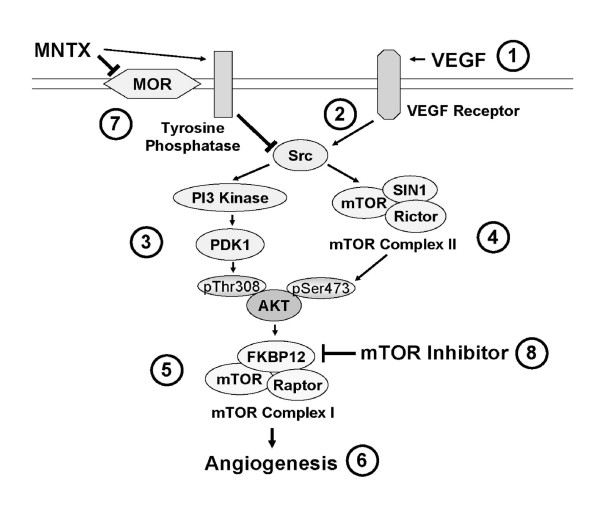Figure 9.
Schematic diagram of a proposed mechanism of MNTX synergistic effects with temsirolimus on inhibition of VEGF-induced angiogenic events. VEGF binding to VEGF receptors (1) induces Src activation (tyrosine phosphorylation)(2), Src-mediated PI3 kinase/PDK1 activation with consequent phospho-threonine308 Akt phosphorylation (3) and mTOR Complex 2 formation (mTOR/SIN1/Rictor) with consequent phospho-serine473 Akt phosphorylation (4). Activated (serine/threonine phosphorylated) Akt promotes mTOR Complex 1 formation (mTOR/FKBP12/Raptor) (5) required for EC proliferation and migration (6). MNTX inhibits the mu opioid receptor and promotes tyrosine phosphatase activity and Src inactivation (7). Temsirolimus binds to FKBP12 and inhibits mTOR Complex 2 formation (8). Therefore, the synergistic effects of MNTX with temsirolimus are achieved through inhibition of different components of a common VEGF-induced angiogenic signaling pathway. MNTX can have important clinical utility by potentially lower the therapeutic dose of temsirolimus in the treatment of various diseases requiring angiogenesis including cancer.

